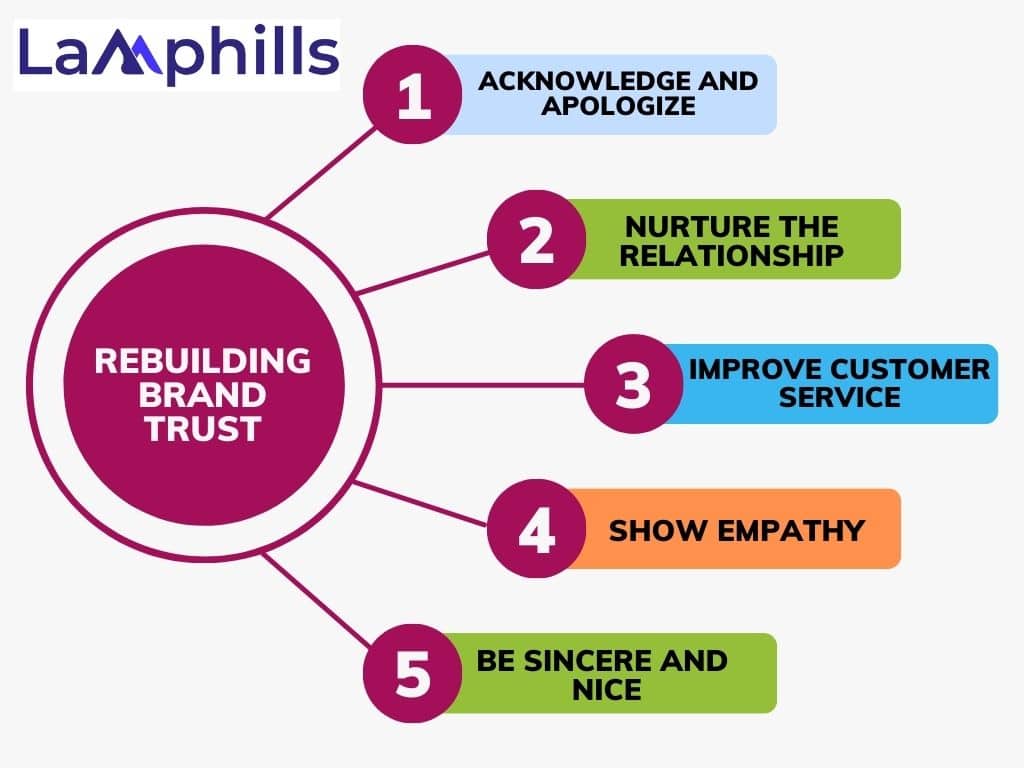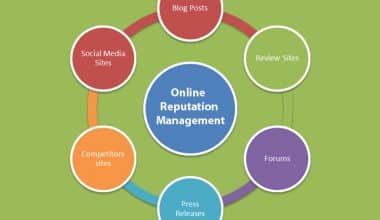Rebuilding trust after a brand mishap is always a challenge. Besides writing, I run an online hair store. Once, during a busy sales period, I accidentally sent a customer the wrong product she ordered. It was an honest mistake, but it made me lose her trust.
I quickly owned up to the error and apologized, trying to fix the mistake as quickly as possible. Even though I tried hard, the customer was upset and stopped buying from us. It took many months of consistent, genuine efforts, including better communication, offering discounts, and giving personalized service, before I could slowly mend our relationship.
This experience taught me important lessons about keeping trust and customer loyalty, which I’m excited to share in this article. These methods have not only helped me during tough times but have also made my relationships with customers stronger.
Key Points
- Overpromising is a common mistake business owners make. If you promise too much and then don’t deliver, your customers will lose trust in you. Only commit to what you are sure you can achieve. Avoid the mistake of trying to impress by promising too much.
- Admit mistakes right away and apologize sincerely. Show genuine care for the customer’s issue and outline clear steps to fix the problem to regain their trust.
- Always be consistent when talking to clients. If you consistently give the same message in the same manner, you will build trust over time. If your messages are inconsistent, clients will doubt your abilities.
- Improve Customer Service by addressing weaknesses and responding promptly on social media. Ensure promises are kept and provide reliable service to rebuild trust. It’s always smart to see things from your customer’s perspective. Use negative feedback constructively, demonstrate clear progress, and maintain a user-friendly website to build a trustworthy brand image.
Read: HOW TO MEASURE BRAND AWARENESS: Tips To Improve Your Brand Strategy
First, let’s look at some things that can destroy trust.
What Destroys The Trust of Customers?
Gaining clients’ trust can take a long time. It requires consistent hard work and outstanding service to win them over. However, remember that trust can be lost in just a few seconds because of a single mistake. Once trust is lost, it might never come back.
Always make sure not to lose your clients’ trust by avoiding these mistakes:
#1. Being Inconsistent:
Always be consistent when talking to clients. If you consistently give the same message in the same manner, you will build trust over time. If your messages are inconsistent, clients will doubt your abilities.
Stay committed, keep giving the same message, and stay positive, and clients will continue to trust you.
Also, remember that customers watch what you do as much as they listen to what you say. If you fail to make calls when promised, you’ll lose your client’s trust. Although unexpected things can happen, always keep your promises. Make sure to be on time for meetings and respond to emails quickly.
#2. Overpromising:
Overpromising is a common mistake business owners make. If you promise too much and then don’t deliver, your customers will lose trust in you. Only commit to what you are sure you can achieve. Avoid the mistake of trying to impress by promising too much.
Every time you promise too much, you will likely not meet those expectations. For example, always present past results accurately. Keep in mind that people usually just want to do better than the bank; they aren’t expecting extraordinary returns.
#3. Not delivering on time:
From my experience with customers, a lot of people dislike online shopping because they can’t get their purchases right away. They often look at how long delivery will take before buying something. Sticking to these delivery times can create a positive impression.
You don’t need to offer super fast or two-day shipping, but you should commit to what you can realistically provide. To ensure you know the correct delivery times, work with reliable and efficient shipping companies.
If you provide a service, make sure to meet deadlines and delivery dates. This shows that you are reliable.
#4. Never admitting you’re wrong:
Everyone makes mistakes sometimes, and no one knows everything. If you don’t admit when you’re unsure, clients will feel you’re hiding the truth. If you mess up, be honest about it, or it will hurt your relationship with clients. Don’t shy away from tough conversations – tell the truth when necessary.
Your clients chose to do business with you because they trusted you. To keep their trust, you must provide excellent service. This means being consistent in what you say and do, and showing good communication skills. If your clients like and trust you, that’s a great achievement. Just remember, to maintain their trust, you must keep providing excellent service.
#5. Providing limited information:
Customers lose faith in advisors who don’t stay in touch. If you don’t keep your clients informed, they might think you don’t care about them. When important news breaks, you should call them right away to reassure them that you are keeping an eye on things and looking out for their best interests.
To keep a good relationship, make sure you communicate regularly. It’s much better to call too often than not enough. Also, be reachable for their calls; don’t make them have to look hard to find you. If they think you’re avoiding them, they’ll start to distrust you.
#6. Showing poor leadership
For instance, if you don’t trust the stock market, your clients will see it. They need to know that investing in stocks is smart, especially when the market is shaky. If you waver or don’t reassure them, they might get scared by bad news.
You need to help your clients when times are tough. Show them you’ve got everything under control. This will make them glad they trusted you. Don’t just say anything that comes to mind, always have a plan for when the market is uncertain, so you can handle it confidently.
#7. The products delivered do not match the information provided on the website:
This was the same mistake I made with my customer. This is a really bad situation. If a customer buys something from your website and it’s not what they expected or what you promised, you’ll probably lose that customer. This is why it’s so important to have clear product descriptions, good return policies, and positive customer reviews.
These are just the basic needs. Besides these, other things that annoy customers include:
- Unsafe payment methods
- Terrible customer service
- Unwanted emails or texts
Many businesses have lost money because they lost their customers’ trust. Once a company’s reputation is destroyed, it can take a long time to fix. To regain customers’ trust, business owners must actively work to resolve these issues.
In addition, let me show you the simple steps I use to connect with my customers.
11 Expert Tips for Rebuilding Trust After a Brand Mishap

Rebuilding trust starts by admitting mistakes and promising to improve. Sadly, customers often hear promises that aren’t kept. Business owners must act on their words; otherwise, if not, they risk losing their customers. To regain trust, a company must show it values the customers’ time by:
#1. Acknowledge and apologize quickly:
As soon as you learn about the problem, it is wise you admit it and say sorry immediately. After sorting things out with my customer, I received feedback from her. She mentioned that I was quick to apologize repeatedly. She appreciated that I consistently said sorry, making her feel genuinely heard and respected.
However, a fast apology alone isn’t enough. People online really dislike insincere, generic apologies from companies that seem uncaring. A good apology shows genuine care for the customer’s issue and includes clear steps to fix the problem.
When you apologize, don’t just talk about how well your company is doing or its good name. This can make it seem like the customer’s issue isn’t that important. Instead, think about what you would want if you were the customer. Would you like to hear excuses, or would you rather the company take steps to make sure the problem doesn’t happen again?
Saying sorry the right way is key to regaining trust with a customer who isn’t happy. Plus, customer satisfaction can go up by as much as 15% when they believe the apology is sincere.
#2. Nurture the relationship:
This tip has been of great help to me. Be intentional in building quality bonds with your customers. To know what your customers want, you can use automatic surveys and follow-ups after they’ve used your service. But don’t forget the impact of a personal touch, like sending an email, making a call, or meeting them face-to-face. It’s important to make them feel listened to and to show that you care about their feedback and want to improve.
For customers who prefer not to talk directly after an issue, give them the option to leave an online review. This lets them share their thoughts in a clear, recorded way. You can offer a solution or just thank them for their feedback and assure them that you’ll make changes to prevent the same problems in the future. Make it clear that your main aim is to exceed their expectations and show that you truly value your relationship with them.
#3. Focus on improving your customer service:
If a customer has a bad experience with your business, it’s important to ensure it doesn’t happen again. Now is a good time to identify and fix any weaknesses in your customer service. A good strategy is to strengthen your social media presence.
Customers often use social media as their first contact with your business. They go there to learn about your products and services, leave reviews, or express their concerns.
You don’t need to follow every online trend to improve customer relationships or have a friendly social media presence. The best way to enhance customer service is by responding to reviews and answering any messages or comments from customers.
Keep in mind, that customers value consistency. Don’t promise free shipping if you can’t follow through. Being consistent also means keeping your promises.
#4. Embrace Sincerity And Care:
It’s important to be truthful and nice to customers. Trust can vary, it’s not constant. Strong relationships are built on trust.
#5. Speak clearly and openly:
Keep communication clear and open. Problems can happen at any time, and your ability to handle these issues well matters a lot. Be kind, be honest, and work hard to fix the situation. You must be genuine in your efforts.
#6. Show clear progress:
Be clear and show good progress. For instance, Domino’s Pizza, some time ago, admitted that their pizza wasn’t very good, but they’ve made big improvements since then. I think their customers like these changes and, now, they are doing well.
#7. Check out how your website’s design works for users:
Your website’s design is vital but often overlooked when it comes to how customers see your brand. A good brand is easy to use and keeps its promises to customers.
Customers are wary of brands that look different on various platforms. It’s important to make sure your branding is consistent and professional everywhere, including on different apps and platforms.
However, having a nice logo and modern colors alone is not enough. If your website is hard to use, customers might hesitate to trust you with their personal information for online purchases.
To build trust, your website must be easy to navigate. It should look appealing and function smoothly. Slow images or cluttered pages can drive customers away. Additionally, 44% of visitors might leave a website if it doesn’t provide contact information.
#8. Show Empathy:
Whether you’ve actually made a mistake or just missed a chance to better understand your customers and outdo your competitors, it’s always smart to see things from your customers’ perspective. Think about what more you can provide and how you can improve your service. Often, clear communication is essential. You can catch your customers’ attention with raffles, satisfaction surveys, or discounts, but sometimes a simple apology and asking how to improve can be enough to regain their trust. This approach works for employees and suppliers too.
#9. Use negative reviews to your advantage:
Learn from bad reviews to make your business better. You’ve likely seen some bad reviews on your business’s social media or page. No matter how harsh they are, try not to take them to heart.
You can’t make every customer happy, and reacting negatively can hurt your business even more. Pause and take a deep breath before you respond to a negative review.
#10. Monitor and evaluate key metrics:
A good way to connect with new customers is to keep an eye on social media for keywords related to your industry, not just your brand.
Understanding how your competitors perform helps you spot their weaknesses, which you can turn into chances to help your customers. For instance, if you notice a competitor does not respond to tweets, you can step in and offer your services.
Gathering feedback from customers is also key to enhancing their experience. Encourage them to fill out surveys about their shopping experience and leave honest reviews of their purchases.
This feedback gives you valuable information about what improvements are needed in the customer experience.
Additionally, tracking customer loyalty and retention is important. By keeping tabs on metrics like customer retention rate, churn rate, customer satisfaction score, and net promoter score, you can better understand and improve your brand’s reputation.
#11. Build Brand Loyalty:
If you’ve already established strong brand loyalty with your products and services, it’s easier to regain trust if it’s lost. If you haven’t started building this loyalty, now is the time to do so. But we’re not just talking about offering discounts like ‘buy 10 and get one free.’ Instead, consider sending thank you notes, suggesting products your customers might need, and providing special offers that truly benefit their businesses. Building trust and loyalty is all about maintaining good relationships.
Pay attention and actively try to understand your customers. This way, your brand will be seen as valuable and trustworthy. If you make a mistake, your customers will believe that you can handle it responsibly a
Whether you’re dealing with a major error that gets media attention and upsets customers, or a minor mistake with a supplier, be prepared. Have a plan for handling crises and know how you’ll recover.
Read Also: 7 Simple Practical Steps to Build Brand Loyalty
Let’s show you a few examples of companies that have earned their customers’ trust and loyalty.
Examples of companies that have successfully earned customer trust and loyalty.
They include:
#1. Amazon simplifies shopping by customizing it for each user
Amazon earns a lot of its sales from personalized recommendations, which make up 35 percent of its total sales. These suggestions are based on what customers have bought, items in their shopping cart, and what similar customers have purchased. This smart system greatly benefits Amazon and makes shopping easier for customers.
Personalized shopping helps attract and keep customers. Surveys show that 86 percent of customers are influenced by personalization when buying, and 56 percent are more likely to return to sites that offer personalized suggestions. Although not every company can handle data like Amazon, the key idea is that personalization improves customer experience and is good for business.
#2. Zappos
Zappos is a great example of how a company can succeed by focusing on customer service and satisfaction. The company sells shoes, clothes, and accessories, and they show this commitment in every part of their business strategy.
First, they often promote their excellent customer support. They understand that good customer service isn’t the same for everyone, it’s about matching the right service to each person. To do this, they offer high-quality, 24/7 support with friendly staff who are trained to solve problems independently. They are very generous with returns, offering free shipping and up to a year to return items. Zappos is also willing to spend as much time as needed to make sure a customer’s experience is the best it can be. This approach once led to a nearly 11-hour phone call between a customer and a very engaging representative!
Zappos also enhances its customer service by making personal connections. Their representatives try to get to know the customers. For instance, if a representative hears a baby crying during a call, they might add a free small blanket to the customer’s order. These kind, unexpected gestures make Zappos’ customer service outstanding.
#3. Starbucks values being efficient:
Customers are short on time, and this is especially true for many Starbucks customers. To meet this need, Starbucks has tweaked its operations and marketing to be more efficient and effective, while still allowing for the custom drink options that customers love.
A key way Starbucks has improved efficiency without compromising its quality is through its loyalty program. This program not only offers discounts and perks to encourage regular visits but also allows for in-store pickup. Customers can order through the app to skip the line and pick up their drinks at a set time, enjoying the same customization options available in-store. This feature provides quick service for busy customers, while others can still enjoy their Starbucks experience at a leisurely pace.
Starbucks’ loyalty program focuses on customers who need fast service. This strategy has made their app the most popular among major restaurants, with 48 percent of its users regularly using the loyalty app.
Wrap Up.
To fix trust in your brand after a mistake, it’s important to quickly and openly say sorry to those affected. Tell them clearly what you’re doing to solve the problem. By putting these solutions into action and sticking to your promises, you can earn back trust and show that your brand cares about quality and dependability.
Thanks for reading! Please like and share this article. Leave a comment to let us know how it helped you and which tips you tried that were successful.
Frequently Asked Questions
What should a company do if it makes a mistake?
The first thing to do is admit the mistake and accept responsibility. It’s important to listen to those affected, understand what they need, and provide suitable solutions.
How can a company understand what the affected customers need?
Companies should talk directly to the customers involved and ask them what they need and expect. Listening well and having open conversations are crucial.
How can a company maintain a good relationship with its customers after a mistake?
To keep a good relationship, companies should communicate personally through emails, calls, or visits. Offering ways for customers to give feedback and showing a commitment to getting better are also key.
How can a company regain trust and loyalty?
To regain trust, a company should focus on understanding what its customers need, provide excellent service, and quickly address any new issues. A strong brand and regular communication also help rebuild trust.
How can a company prepare for potential mistakes?
Companies should regularly check their processes, training, and how they interact with customers to find ways to get better. Using customer surveys and being open to changes can help them stay ready.
How does having loyal customers help when mistakes happen?
Having loyal customers means they trust the company, making them more likely to understand and support the company’s efforts to fix problems.
How can a company build customer loyalty?
To build loyalty, companies need to know and meet their customers’ needs, offer personalized experiences, and keep communicating openly. Providing value, anticipating needs, and building long-term relationships help foster loyalty.
Why is it important for a company to quickly address mistakes?
Being quick to address mistakes shows the company cares about its customers, employees, and partners. It reduces potential harm and shows the company is serious about fixing issues.
Related Articles:
Building Bridges with International PR (My Journey to Global Brand Storytelling)
HOW TO MEASURE BRAND AWARENESS: Tips To Improve Your Brand Strategy






